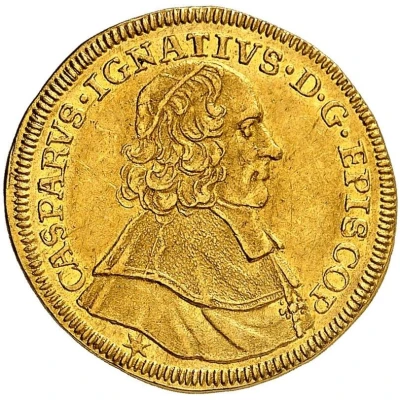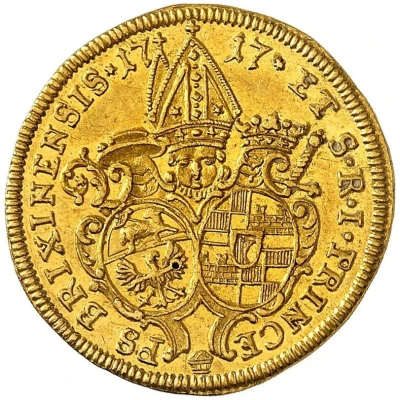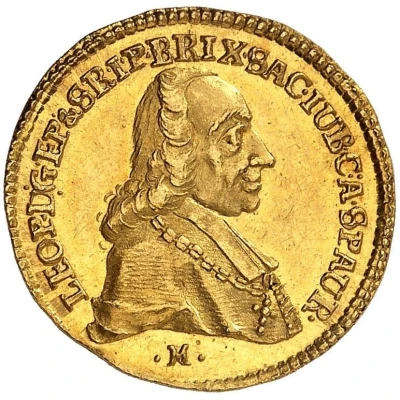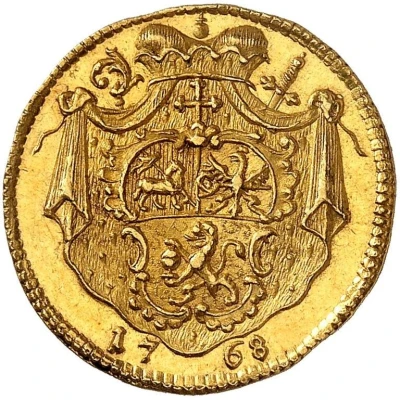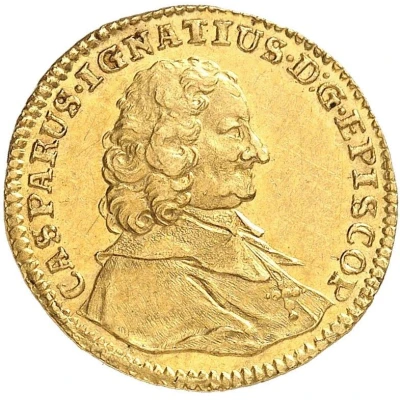
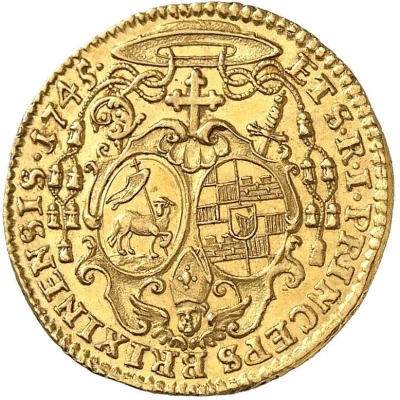

© Fritz Rudolf Künker GmbH & Co. KG, Osnabrück and Lübke & Wiedemann KG, Leonberg
1 Ducat - Caspar Ignaz von Künigl
1745 year| Gold (.986) | 3.5 g | - |
| Issuer | Bishopric of Brixen (Austrian States) |
|---|---|
| Prince-bishop | Kaspar Ignaz of Künigl (1702-1747) |
| Type | Standard circulation coin |
| Year | 1745 |
| Value | 1 Ducat (2) |
| Currency | Thaler |
| Composition | Gold (.986) |
| Weight | 3.5 g |
| Shape | Round |
| Demonetized | Yes |
| Updated | 2024-10-04 |
| Numista | N#306934 |
|---|---|
| Rarity index | 95% |
Reverse
Coats of arms of Brixen and of the Künigl family in oval medallions within ornate cartouche. Cross and galero with tassels above. Crosier and sword behind. Mitred and winged head below.
Script: Latin
Lettering: ET S • R • I • PRINCEPS BRIXINENSIS • 1745 •
Unabridged legend: Et Sacri Romani Imperii princeps Brixensis.
Translation: And Holy Roman Empire Prince of Brixen.
Interesting fact
One interesting fact about the 1 Ducat - Caspar Ignaz von Künigl 1745 coin from the Bishopric of Brixen (Austrian States) is that it features a unique design element - a small hole in the center of the coin. This hole was intentionally drilled into the coin as a way to test its authenticity. In the 18th century, counterfeiters were known to produce fake coins made of cheaper metals, and the hole was a way to prove that the coin was made of genuine gold. The hole also served as a symbol of the coin's value and authenticity, as it was difficult to counterfeit such a small, precise detail.
